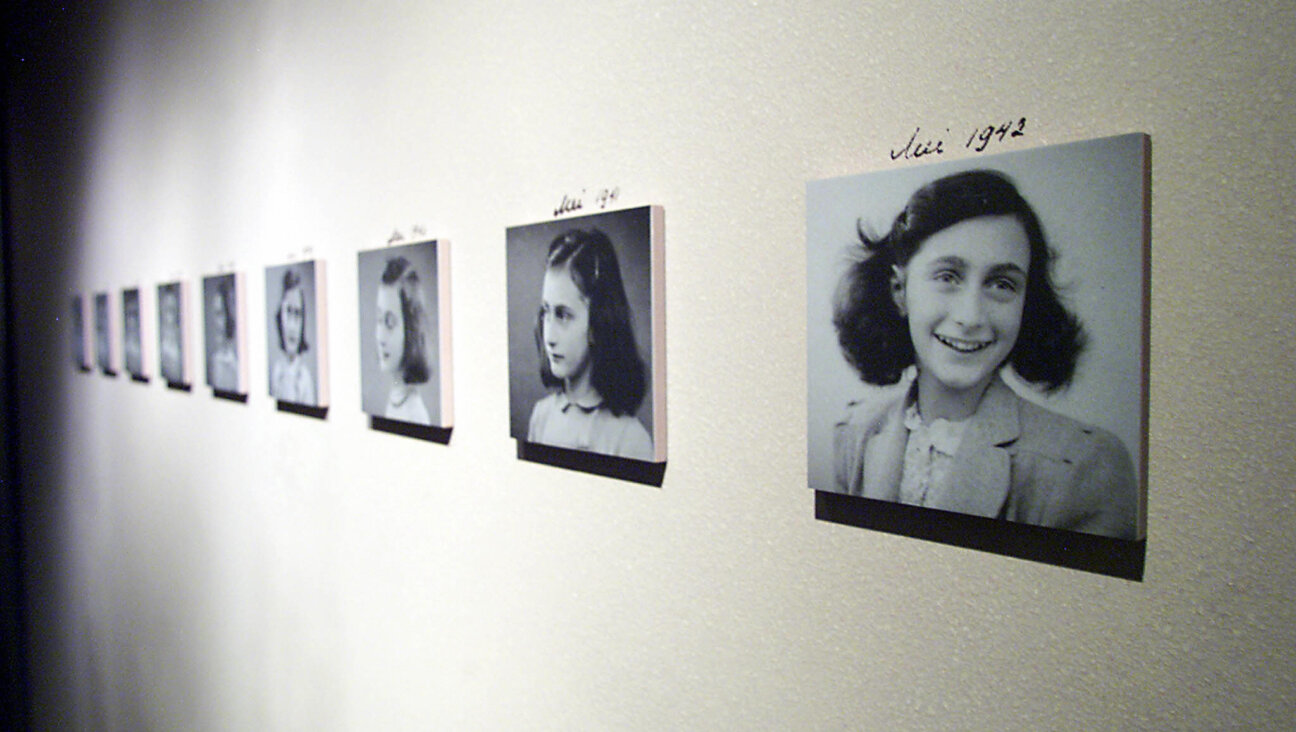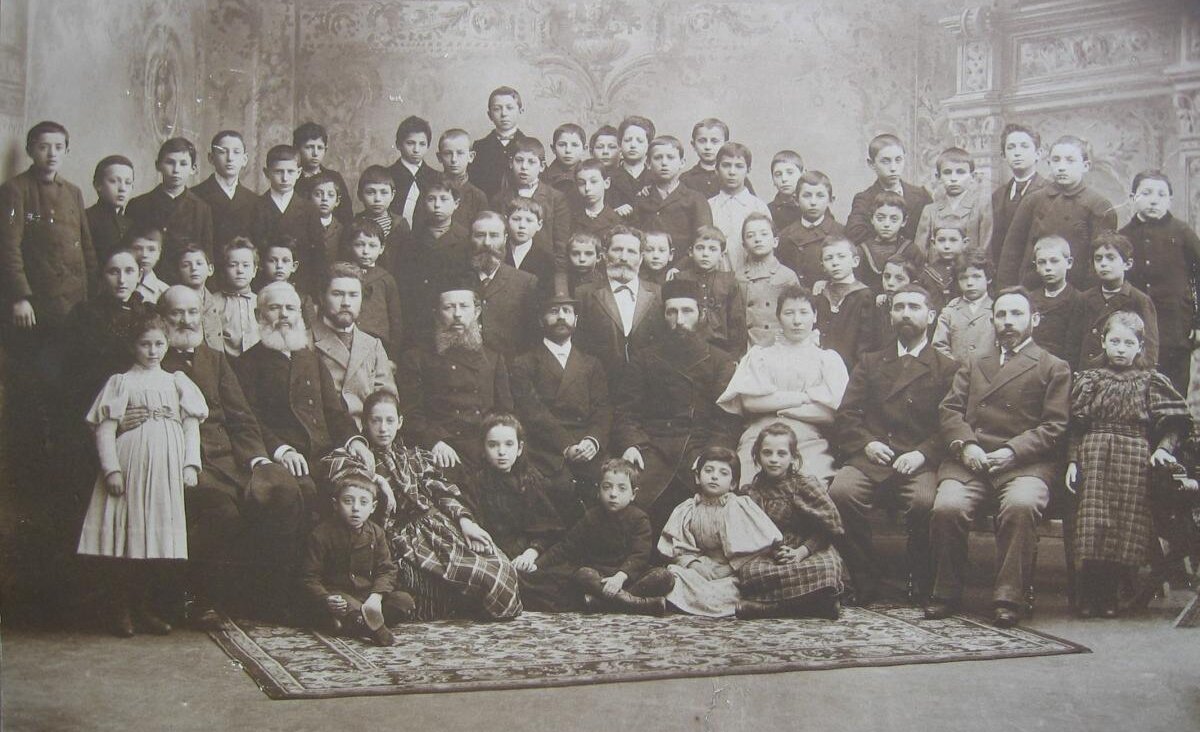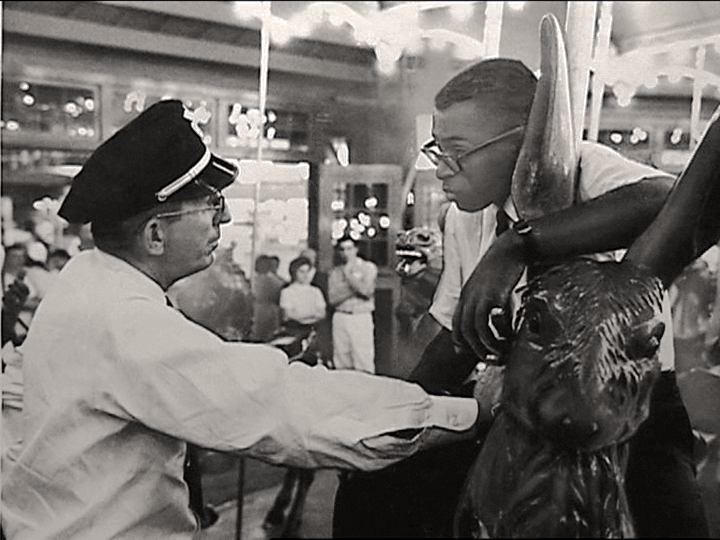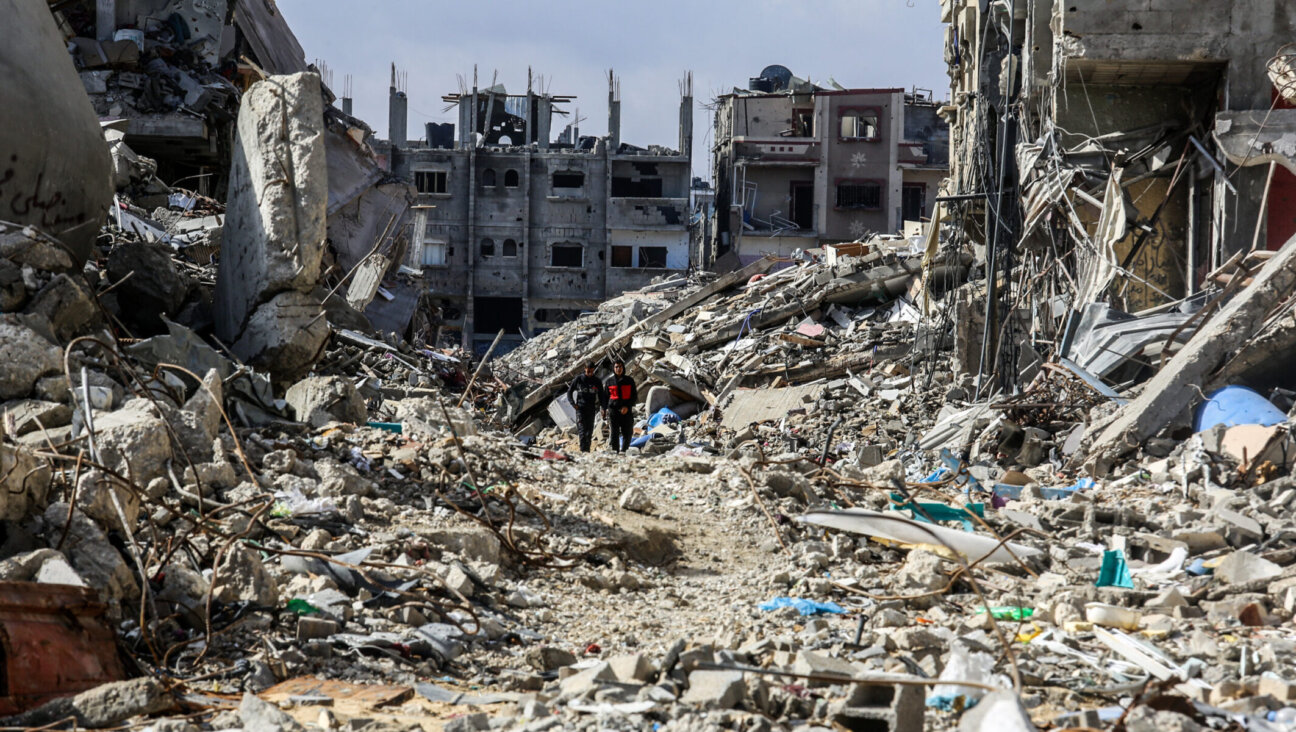Thanks to outdoor dining, it’s beginning to look a lot like Sukkot

Image by Irene Katz Connelly
Most years, Sukkot lasts about a week.
But in this year of plague, the holiday has become a months-long event, with no sign of ending anytime soon. Secular sukkahs are all around us. They’re just going by a new name: “outdoor dining.”
On daily walks through my neighborhood on Manhattan’s Upper East Side, I’ve watched the streets fill up with huts that look like they belong in a synagogue parking lot. It started in the summer, when public health restrictions eased and struggling restaurants commandeered sidewalks and streets to stay afloat. Initially, when good weather made en plein air meals easy, things were tame. First came standard-issue plastic canopies. Then pizzerias erected plywood partitions to cordon off individual dining areas, each with its own heat lamp. At bistros cultivating a more upscale vibe, wooden trellises added ambience but did little to protect fluttering gingham tablecloths from the wind.

Image by Irene Katz Connelly
But anyone who’s experienced one of New York City’s infamous wind tunnels knows that an outdoor meal in the winter is (pun very much intended) no picnic. As the days got shorter, construction accelerated. Corrugated metal walls crept around outdoor dining enclaves until they were all but enclosed. In the ritzier precincts around Madison Avenue, sleek three-sided cabins sprang up, with nary an unfinished plank or blue tarp in sight. One restaurant near my apartment created a rustic tableau that would outshine the most Instagrammable sukkah, with ivy climbing up the walls and a roof covered with fake moss. Curtains hang inside plastic windows that remain closed against cold gusts.

Image by Irene Katz Connelly
At night, garnished by fairy lights and packed with customers sporting expensive outerwear, many restaurants seem like they’re hosting an especially fashionable celebration of the Feast of the Tabernacles. In the mornings, with the tables bare and tarps looking a little worse for wear, they resemble the actual hardscrabble huts they’re meant to evoke.
But there’s one big difference: the elaborate arrangements that make outdoor dining appealing are exactly the features that make a sukkah — well, not a sukkah.
For once I wish we’d see some cultural appropriation of Judaism. A traditional Sukkah is the best outdoor dining space for an airborne virus. If it’s not drafty, it’s not kosher! https://t.co/l22b1TKbW0
— Leah Jones (@ChicagoLeah) November 25, 2020
What makes What makes a
outdoor dining ok Sukkah kosher
? https://t.co/cXPyyFpc31— Jonathan Friedman (@JDFri) October 22, 2020
Meals in modern sukkahs often function as celebrations of autumn abundance. But the structures themselves memorialize the Israelites’ long and arduous journey through the desert. To that end, there are some very specific rules meant to prevent sukkahs from becoming too much like houses. The Chabad movement’s website states that the sukkah’s roof must be made of “raw, unfinished material” like reeds or branches. While the roof must provide adequate shade (no gaps larger than 9.6 inches, in case you were wondering), inhabitants must be able to see stars (or, in New York, light pollution) through the canopy. The sukkah’s temporary nature, and its proximity to the elements, remind us of the fragility of our own lives, however stable and secure they may seem.
In other words, as one Twitter user put it: “If it’s not drafty, it’s not kosher!”

Image by Irene Katz Connelly
By contrast, many restaurants use outdoor dining to recreate indoor dining as faithfully as possible without violating public health regulations. Thus the heimish elements, like curtains and starched white tablecloths, that would feel out of place in intentionally rustic sukkahs. It’s easy to see the appeal. Walking past a pack of brunching seniors or tipsy 20-somethings clustered around space heaters is like stepping back into the pre-pandemic world. Where the sukkah disrupts our daily lives, outdoor dining telegraphs a comforting return to the status quo.
Yet beneath the festive vibe lies a grim reality: While it may be possible to brunch like it’s 2019, safety for citizens and solvency for businesses are anything but guaranteed. New York City is making its outdoor dining programs permanent, but experts have argued that sitting in a sukkah-esque structure is not actually much safer than dining indoors. Even as restaurants do their best to stay afloat, about half of New York’s 300,000 dining workers are currently out of work, and half of the city’s eateries may fold as a result of the pandemic. For restaurateurs who saw outdoor dining as a life raft, shifting policy has proved devastating: After Los Angeles officials abruptly shut down outdoor dining in November, one bar owner posted a furious video contrasting her own modest tent, now closed, with an enormous craft services tent feeding a TV production crew in the same parking lot.

Image by Irene Katz Connelly
And with a winter storm arriving in New York on Wednesday, the city is suspending outdoor dining altogether. Customers will hunker down at home, but restaurants that invested in elaborate al fresco set-ups will be left out in the cold.
More than any kind of urban revival, outdoor dining is a testament to the lasting havoc wrought by the pandemic. The makeshift tents serving determined diners may look like the huts Jews build each fall. But it’s the instability they represent that truly links them to sukkahs of old.
Irene Katz Connelly is an editorial fellow at the Forward. You can contact her at [email protected]. Follow her on Twitter at @katz_conn.
A message from our Publisher & CEO Rachel Fishman Feddersen

I hope you appreciated this article. Before you go, I’d like to ask you to please support the Forward’s award-winning, nonprofit journalism so that we can be prepared for whatever news 2025 brings.
At a time when other newsrooms are closing or cutting back, the Forward has removed its paywall and invested additional resources to report on the ground from Israel and around the U.S. on the impact of the war, rising antisemitism and polarized discourse.
Readers like you make it all possible. Support our work by becoming a Forward Member and connect with our journalism and your community.
— Rachel Fishman Feddersen, Publisher and CEO























